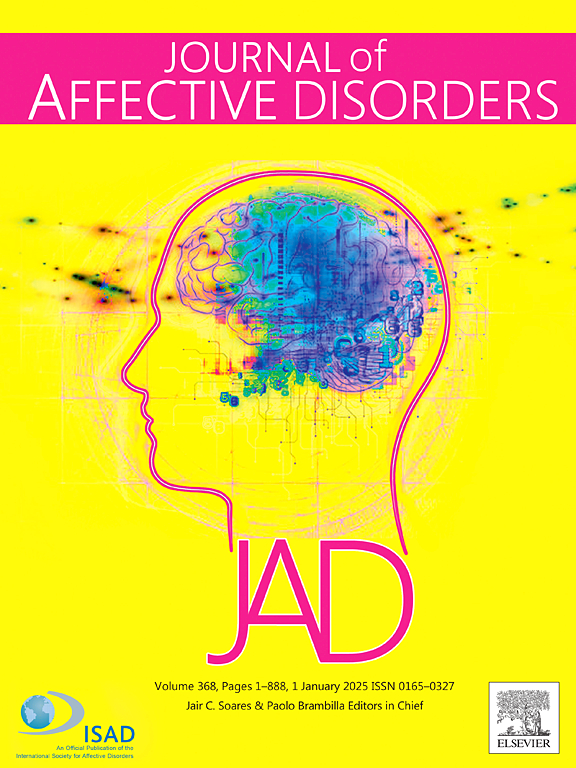Network structure of social anxiety in patients with social anxiety disorder and university students: Examining the cognitive behavioral model and the role of mindfulness
IF 4.9
2区 医学
Q1 CLINICAL NEUROLOGY
引用次数: 0
Abstract
Self-focused attention, cost/probability bias, and avoidance behavior are maintaining factors of social anxiety. The manipulation of dispositional mindfulness has been shown to reduce social anxiety and its maintaining factors. This study examined the associations among dispositional mindfulness, self-focused attention, cost/probability bias, avoidance behavior, and social anxiety to explore the mechanism of mindfulness and its relationship with social anxiety in patients with social anxiety disorder (SAD) and university students. Data from 412 patients with SAD and 367 students were analyzed using psychometric network analysis. Both groups completed self-report measures assessing dispositional mindfulness, self-focused attention, cost/probability bias, avoidance behavior, and social anxiety. A weak negative association was found between non-judging in dispositional mindfulness and self-focused attention to one's behavior in the SAD patients' network. In the students' network, a weak negative association was observed between non-judging and self-focused attention to one's behaviors, as well as between describing and social anxiety. In the SAD patients' network, nodes with the highest strength centrality were probability bias and social anxiety. In the students' network, nodes with the highest strength centrality were social anxiety and cost bias. The global network structure and connectivity differed between patients with SAD and students. The findings support the cognitive-behavioral model of SAD and highlight the heterogeneity of social anxiety, necessitating tailored intervention strategies.
社交焦虑障碍患者与大学生社交焦虑的网络结构:认知行为模型及正念作用的检验
自我关注、成本/概率偏差和回避行为是社交焦虑的维持因素。已证明,操纵性格正念可以减少社交焦虑及其维持因素。本研究旨在探讨社交焦虑障碍(social anxiety disorder, SAD)患者和大学生的正念作用机制及其与社交焦虑的关系,并探讨正念、自我集中注意、成本/概率偏差、回避行为和社交焦虑之间的关系。采用心理测量网络分析对412例SAD患者和367名学生的数据进行分析。两组都完成了自我报告测量,评估了性格正念、自我集中注意力、成本/概率偏差、回避行为和社交焦虑。在性格正念中的不判断与SAD患者网络中的自我关注行为之间存在微弱的负相关。在学生的网络中,观察到不判断和自我关注行为之间,以及描述和社交焦虑之间存在微弱的负相关。在SAD患者网络中,中心性最强的节点为概率偏差和社交焦虑。在学生网络中,中心性最强的节点是社交焦虑和成本偏见。整体网络结构和连通性在SAD患者和学生之间存在差异。研究结果支持了SAD的认知-行为模型,并强调了社交焦虑的异质性,需要有针对性的干预策略。
本文章由计算机程序翻译,如有差异,请以英文原文为准。
求助全文
约1分钟内获得全文
求助全文
来源期刊

Journal of affective disorders
医学-精神病学
CiteScore
10.90
自引率
6.10%
发文量
1319
审稿时长
9.3 weeks
期刊介绍:
The Journal of Affective Disorders publishes papers concerned with affective disorders in the widest sense: depression, mania, mood spectrum, emotions and personality, anxiety and stress. It is interdisciplinary and aims to bring together different approaches for a diverse readership. Top quality papers will be accepted dealing with any aspect of affective disorders, including neuroimaging, cognitive neurosciences, genetics, molecular biology, experimental and clinical neurosciences, pharmacology, neuroimmunoendocrinology, intervention and treatment trials.
 求助内容:
求助内容: 应助结果提醒方式:
应助结果提醒方式:


